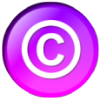EMPOWER - Citing Sources: Page 7 of 8
...And then there's Copyright
 |
A copyright is a set of legal rights that an author has over his work for a limited period of time. Copyright covers everything from using images or sound files from the Web to photocopying. |
Most information is protected by copyright. The exception is work that is in the public domain, which can be reproduced or used by anyone. However, you still must credit the author.
Examples of Public Domain Sources:
- U.S. government publications (for example: federal laws; the U.S. Constitution).
- Copyright has been waived by the author (for example: "open source" software like the Linux operating system).
- Works on which the copyright has expired (for example: some episodes of the Three Stooges).
- Works created and first published before 1923 (for example: the plays of William Shakespeare).